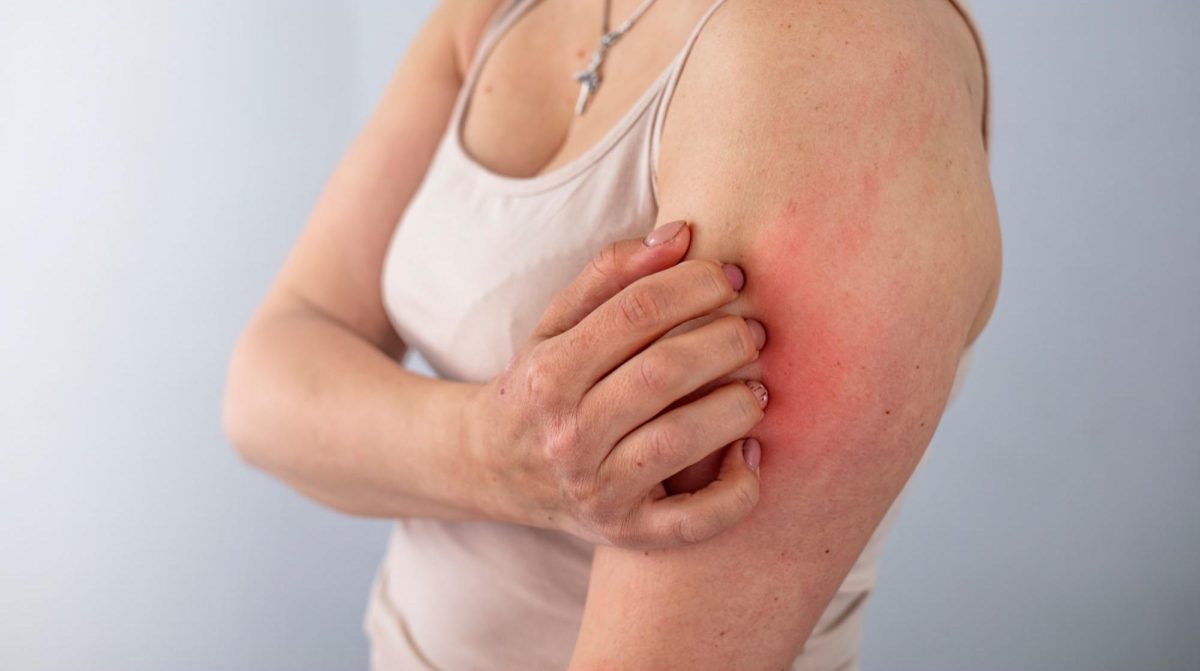The study discovered that acute thirdhand smoke exposure increased urine biomarkers of oxidative damage to DNA, lipids, and proteins and that these biomarkers remained elevated after the exposure ended.
A new study advances the molecular understanding of the impacts of thirdhand smoke.
Thirdhand smoke (THS) refers to the residual pollutants from tobacco smoke that linger on surfaces and in dust after the tobacco has been smoked. It may remain on indoor surfaces indefinitely, subjecting both smokers and non-smokers to potentially dangerous exposure.
According to a group of scientists at the University of California, Riverside, acute skin exposure to THS raises biomarkers linked to the onset of skin diseases such as contact dermatitis and psoriasis.
“We found exposure of human skin to THS initiates mechanisms of inflammatory skin disease and elevates urinary biomarkers of oxidative harm, which could lead to other diseases, such as cancer, heart disease, and atherosclerosis,” said Shane Sakamaki-Ching, a former graduate student at UC Riverside who graduated with a doctoral degree in cell, molecular, and developmental biology in March 2022. “Alarmingly, acute dermal exposure to THS mimics the harmful effects of cigarette smoking.”
The study is the first to be conducted on people who have been exposed to THS dermally, and it was recently published in the journal eBioMedicine.
Ten healthy, non-smokers between the ages of 22 and 45 participated in the clinical study, which was conducted at the University of California, San Francisco. Per participant wore clothing impregnated with THS for three hours and either walked or ran on a treadmill for at least 15 minutes each hour to induce perspiration and enhance THS absorption through the skin. Participants were unaware that the clothes contained THS. The subjects’ blood and urine samples were then taken on a regular basis to check for protein changes and indications of oxidative stress brought on by the THS. Participants in the control exposure wore clean clothes.

Skin is the largest organ to contact thirdhand smoke and may thus receive the greatest exposure. Credit: Celeste Lum
“We found acute THS exposure caused elevation of urinary biomarkers of oxidative damage to DNA, lipids, and proteins, and these biomarkers remained high after the exposure stopped,” said Sakamaki-Ching, now a research scientist at Kite Pharma in California, where he leads a stem cell team. “Cigarette smokers show the same elevation in these biomarkers. Our findings can help physicians in diagnosing patients exposed to THS and help develop regulatory policies dealing with remediation of indoor environments contaminated with THS.”
Prue Talbot, a professor of cell biology in whose lab Sakamaki-Ching worked, explained that skin is the largest organ to contact THS and may thus receive the greatest exposure.
“There is a general lack of knowledge of human health responses to THS exposure,” said Talbot, the paper’s corresponding author. “If you buy a used car previously owned by a smoker, you are putting yourself at some health risk. If you go to a casino that allows smoking, you are exposing your skin to THS. The same applies to staying in a hotel room that was previously occupied by a smoker.”
The THS exposures that the 10 participants were subjected to were relatively brief and did not cause visible changes in the skin. Nevertheless, the molecular biomarkers in blood that are associated with early-stage activation of contact dermatitis, psoriasis, and other skin conditions were elevated.
“This underscores the idea that dermal exposure to THS could lead to molecular initiation of inflammation-induced skin diseases,” Sakamaki-Ching said.
Next, the researchers plan to evaluate residues left by electronic cigarettes that can come into contact with human skin. They also plan to evaluate larger populations exposed to longer periods of dermal THS.
Reference: “Dermal thirdhand smoke exposure induces oxidative damage, initiates skin inflammatory markers, and adversely alters the human plasma proteome” by Shane Sakamaki-Ching, Suzaynn Schick, Gabriela Grigorean, Jun Li and Prue Talbot, 19 September 2022, eBioMedicine.
DOI: 10.1016/j.ebiom.2022.104256
The study was funded by the Tobacco Related Disease Research Program of California.
Share your story or advertise with us: Whatsapp: +2347068606071 Email: info@newspotng.com




![Tinubu, Matawalle, others join special prayers for Nigeria’s fallen heroes [photos]](https://newspotng.com/wp-content/uploads/2025/01/Tinubu-Matawalle-others-join-special-prayers-for-Nigerias-fallen-heroes-218x150.jpg)



![Tinubu, Matawalle, others join special prayers for Nigeria’s fallen heroes [photos]](https://newspotng.com/wp-content/uploads/2025/01/Tinubu-Matawalle-others-join-special-prayers-for-Nigerias-fallen-heroes-324x235.jpg)



![Tinubu, Matawalle, others join special prayers for Nigeria’s fallen heroes [photos]](https://newspotng.com/wp-content/uploads/2025/01/Tinubu-Matawalle-others-join-special-prayers-for-Nigerias-fallen-heroes-324x160.jpg)


